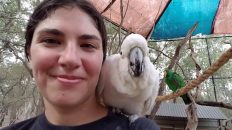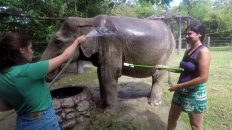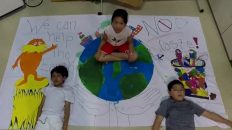I am thoroughly enjoying my time here in Australia. The first 3 days, my volunteer program provided me with a 2-day tour of Sydney, complete with a guide! I can’t even express how grateful I am to have had Hayley give me history lessons, and also teach me how easy it is to get around the city. I loved learning about the early settlers, the Aboriginal history, and the diverse plant and wildlife that is here today.
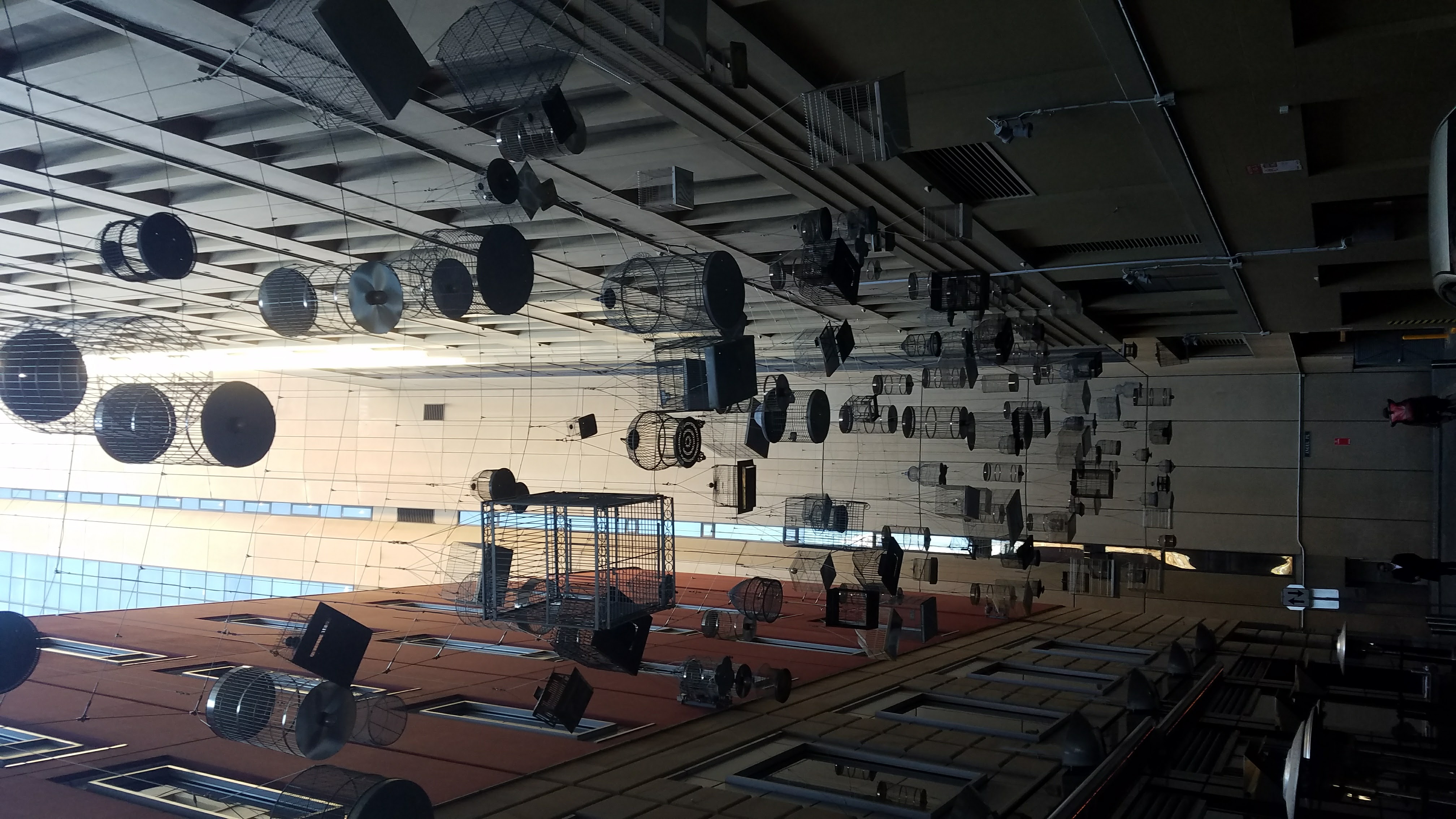 Unfortunately, like most cities, there is also some negative history with it. It is very depressing to hear how cruel the settlers were to the Natives in this country (and everywhere – I’m looking at you, America). There was a fresh water stream in Sydney, and two years after the settlers came it was contaminated and undrinkable. There is a beautiful art display of 50 bird cages – dedicated to the 50 species of birds that went extinct as the city of Sydney developed.
Unfortunately, like most cities, there is also some negative history with it. It is very depressing to hear how cruel the settlers were to the Natives in this country (and everywhere – I’m looking at you, America). There was a fresh water stream in Sydney, and two years after the settlers came it was contaminated and undrinkable. There is a beautiful art display of 50 bird cages – dedicated to the 50 species of birds that went extinct as the city of Sydney developed.
After touring the city, I came to animal heaven, aka the Australia Walkabout Wildlife Sanctuary. As a teacher, I have accepted and understood the value of zoos, but from the environmentalist side of me, it hurts my soul. The Walkabout is what ALL zoos should be – a safehaven for animals to be animals, not an entertainment source in a cage.
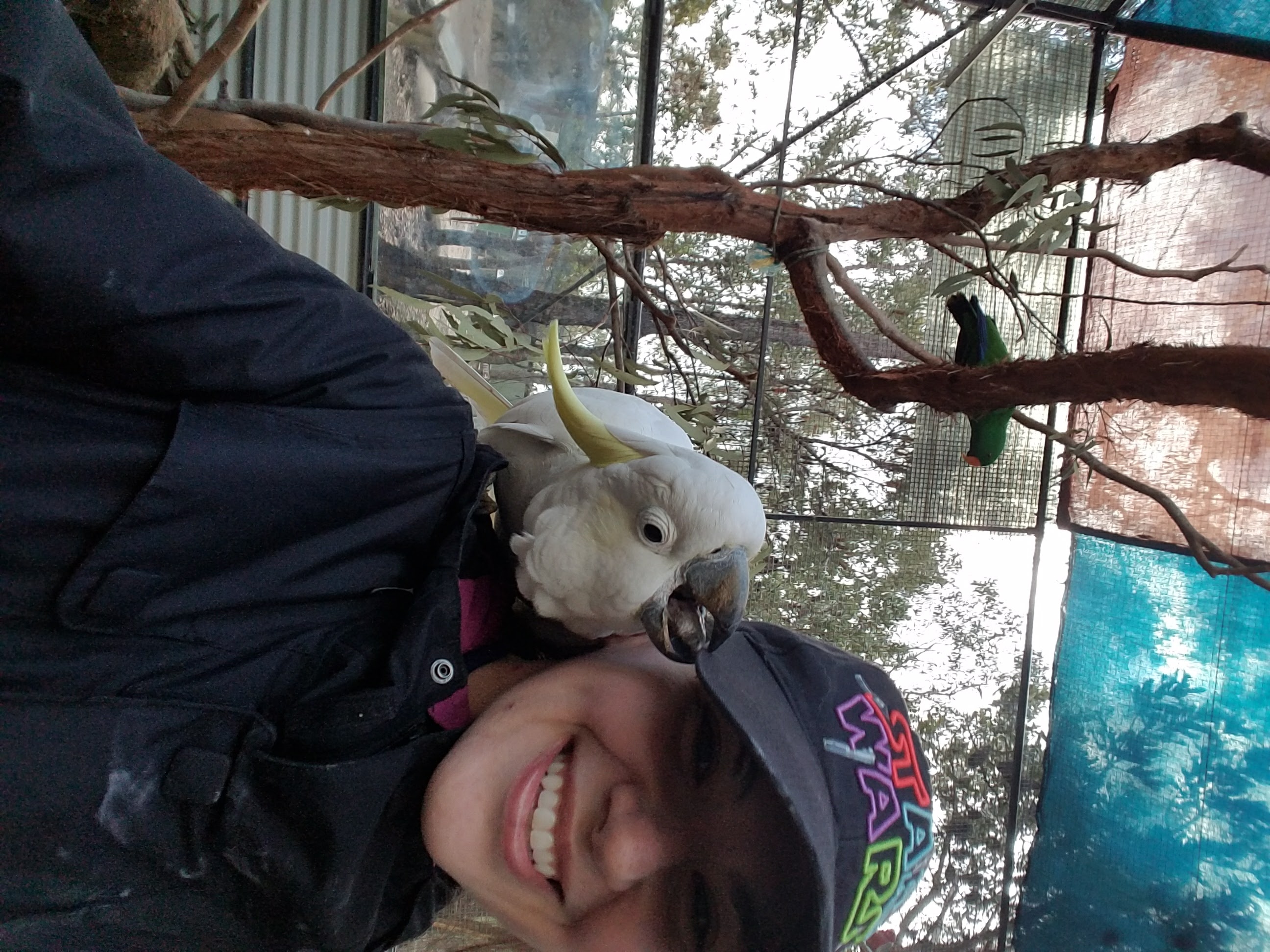 While I am here, I get to work with lots of animals – a pig, dingoes, alpacas, kangaroos, flying foxes, and lots of birds! My favorite animal here is a cockatoo named Dexter. He is not very nice to many rangers here, not even the Walkabout owner Gerald! But for some reason he and I clicked, and I have been singing to him ever since (of course, I would click with the behavior animal!) I love when we chat and he puts up his yellow mohawk, and I love when he gives me kisses.
While I am here, I get to work with lots of animals – a pig, dingoes, alpacas, kangaroos, flying foxes, and lots of birds! My favorite animal here is a cockatoo named Dexter. He is not very nice to many rangers here, not even the Walkabout owner Gerald! But for some reason he and I clicked, and I have been singing to him ever since (of course, I would click with the behavior animal!) I love when we chat and he puts up his yellow mohawk, and I love when he gives me kisses.
Tassin and Gerald, the owners of the Wildlife Sanctuary, have an amazing vision – for an increase in conservation and awareness through education. They want to demonstrate how plant and wildlife is and should be without people messing with it. They take the animals that zoos won’t (healthy, and disabled); there are flying foxes that have a broken wing, and a tawny frogmouth bird (not an owl, as I had originally thought) with a deformed beak. The Australian Walkabout has animals that are indigenous, or native, to Australia, and provides them a home to stay safe, happy, and healthy.
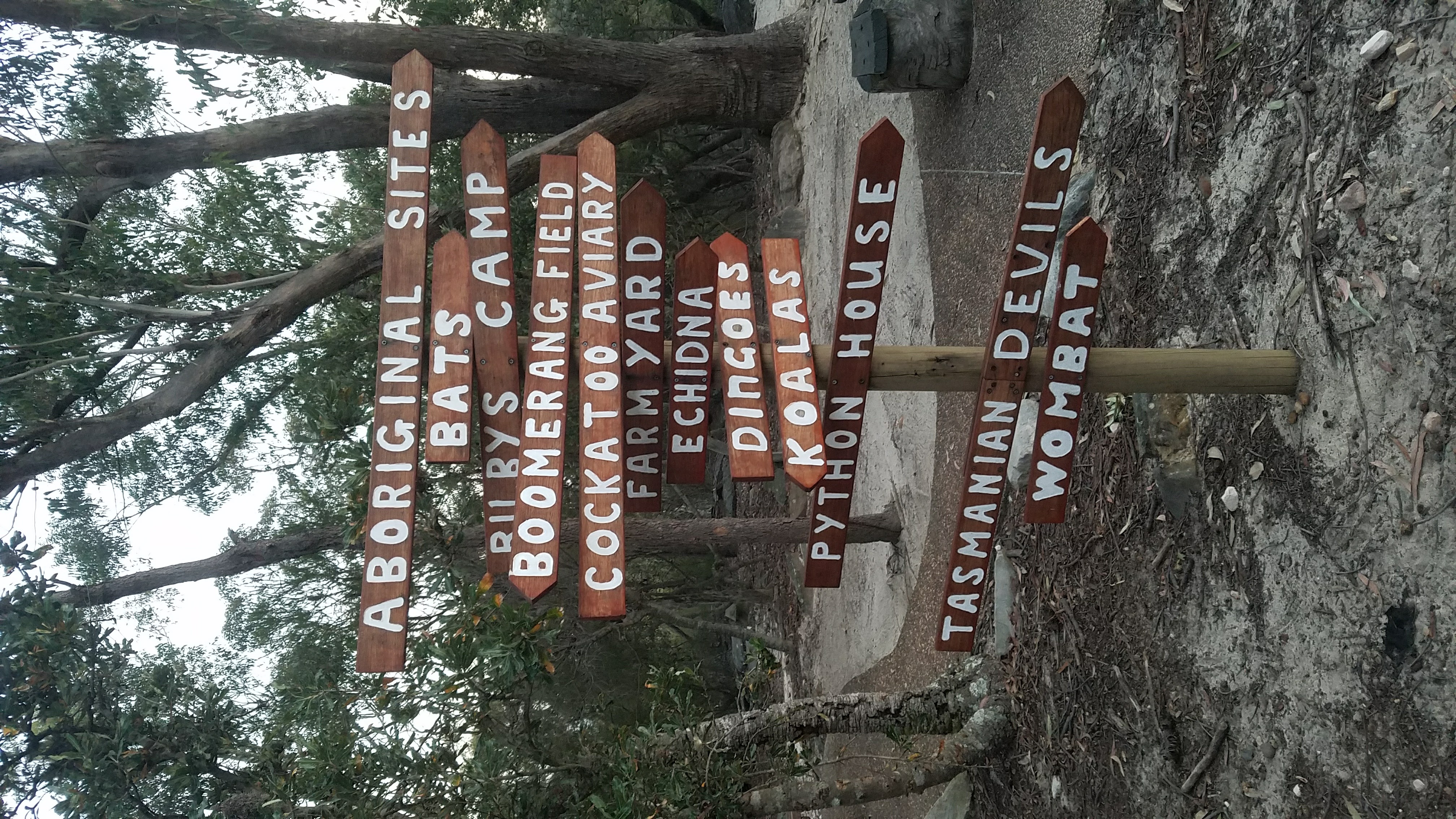
It is completely normal to pass a few emus, kangaroos, and wallabies on your way to work. I am blessed to stay on site, and the team of rangers at the Wildlife Sanctuary are wonderful, supportive, and always ready to answer my crazy questions! The Australia Walkabout Wildlife Sanctuary values education partnerships – they work with scientists and students to study and provide remarkable care to the animals, and help repopulate animals that are endangered, or threatened to become extinct.
There definitely needs to be more places like the Australia Walkabaout Wildlife Sanctuary in the world. I hope I get another chance to volunteer more time here, and I hope to see more wildlife sanctuaries in the future.
Below you will find a lesson that will introduce the vocabulary words ‘indigenous’ and ‘endangered’ to your child/students. As always, please feel free to comment or ask any questions regarding this or any lessons/visuals/etc. and please fill out this survey if this helps you in your personal and/or educational life!
Lesson: An Introduction to ‘indigenous’ and ‘endangered’
Objective: You will learn and define the words ‘indigenous’ and ‘endangered’ and connect the language with your life.
Suggested books: Uno’s Garden by Graeme Base, Almost Gone: The World’s Rarest Animals by Steve Jenkins, Will We Miss Them? Endangered Animals by Alexandra Wright, What Can We Do About Endangered Animals by Suzanne Slade
Vocabulary:
- Indigenous – native; occurring naturally in a particular place/region/country.
- Endangered – at serious risk of extinction.
Essential Questions:
- What does endangered mean? What do you think indigenous means?
- What is the difference between a zoo and a wildlife sanctuary?
- What animals would you want in your wildlife sanctuary?
Materials:
- SMARTboard and/or poster board
- Recycled paper and/or writing journal
- Writing utensils
- Art materials (if making a craft with this lesson) – construction paper, stickers, glue, tissue paper, animal printouts, etc.
Procedure: As always, it is important to find out your child/students funds of knowledge about the words and the topic of endangered species. It is also important to listen to what they know, and their opinions about animal preservation. There are no dumb questions – only dumb answers!
After defining the words with your class/child through the above video, a story about endangered animals (see above for suggestions), and maybe showing them a video about indigenous and endangered animals, you could easily make a paper plate emu, or do a lorikeet cutout. Or you can do some super A to Z Australian animal crafts.
Or, my favorite, incorporate movement with your learning! If you know yoga, you can do some animal poses with them, or you can play an interactive movement game and make animal dice. You can also check out Scholastic’s lesson plans for teaching about endangered animals!
What I would want to know is what animals my students know are endangered, and what animals they would want to have in their wildlife sanctuary? I would repeat the vocabulary words, as well as the term ‘wildlife sanctuary’ and the difference between that and a zoo (since zoos are what my students are familiar with). We would list animals that we can find in New Jersey – I would also have a personalized, interactive quiz or game for them, with pictures of the animals. Then, I would have them cut and paste (or draw, if my students have the ability to do so) animals they would have in their wildlife sanctuary. I would use my writing journal pages as examples.
For my students, I would not introduce more than 5 or 6 indigenous animals. Depending on the level of the individual student’s ability, I would have them match a name to the animal, point to the animal, match the picture to picture, or draw/write the animal and their name. Some students could identify and work with all 6 animals, others I would concentrate on one animal (there would be some in-between individual goals too).
No matter what, I would do this vocabulary lesson for at least one week, with various hands-on activities to connect all of the content with. Because my goal is for students to learn and remember the words ‘indigenous’ and ‘endangered’ and make a connection to the vocabulary, animals, and their own lives.


